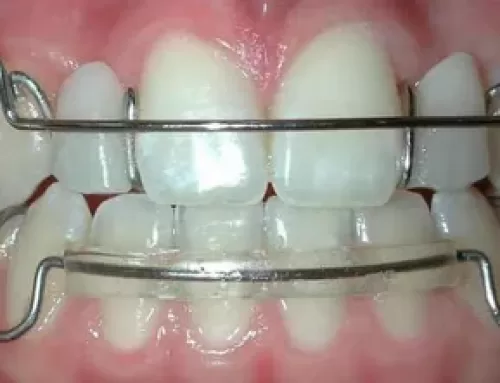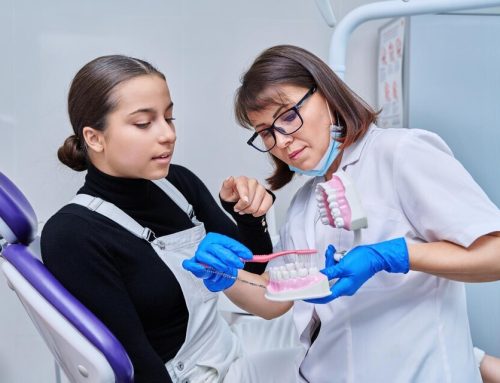Many people are afraid of root canal therapy because of the misconceptions that surround the practice. But because of developments in dental technology and methods, getting a root canal can now be done with little discomfort. It’s good to know that getting a root canal in Bangalore doesn’t have to hurt if you’re thinking about getting one. This blog will cover root canal therapy in detail, including what to expect during the process, symptoms that point to a need for treatment, what to do afterward, and why Puranik’s Dental Care is the best dentist office in Bangalore for root canal therapy.
What is Root Canal Therapy?
A tooth that has significant decay or infection may be saved through a process called root canal therapy, sometimes referred to as endodontic treatment. The procedure includes extracting the diseased or damaged pulp, cleaning and sanitizing the tooth’s inside chambers, and sealing the tooth to stop future infection. By preserving the native tooth, this technique can reduce discomfort and avoid the need for extraction.
Root Canal Procedure: What Happens During Root Canal Treatment
The goal of the multi-step root canal treatment is to remove infected pulp from inside the tooth and shield it from further infection. Being aware of each phase in the process can help reduce treatment-related anxiety.
The Step-by-Step Procedure of Root Canal Therapy
- Diagnosis and Preparation: The dentist starts with a comprehensive examination, frequently employing X-rays to assess the infection’s severity and make treatment plans.
- Anesthesia: Local anesthetic is used to numb the affected area in order to guarantee a painless procedure. This step is essentially painless thanks to modern anesthetic procedures.
- Getting to the Pulp: To get to the affected pulp, a tiny hole is cut into the tooth’s crown. To reduce discomfort, this process is done precisely.
- Extracting the diseased Pulp: The dentist extracts the injured or diseased pulp from the pulp chamber and root canals using specialized instruments.
- Cleaning & Disinfection: To get rid of any leftover bacteria, the root canals and empty pulp chamber are carefully cleansed and disinfected.
- Canal Shaping: After that, the canals are shaped to enable appropriate filling. By doing this step, you can be sure the canals are clear of debris and prepared for sealing.
- Filling the Canals: To seal and stop reinfection, the cleaned and formed canals are filled with a biocompatible substance, typically gutta-percha.
- Sealing the Tooth: Until a permanent crown or filling can be inserted, the tooth is first sealed with a temporary filling.
- Final Restoration: To restore the tooth’s appearance and functionality, the last stage entails installing a crown or permanent filling. This stage guarantees the tooth is completely safe and in good working order.
Common Symptoms indicating the need for Root Canal Therapy Are Listed Below
Recognizing the signs that indicate the need for root canal therapy can help you seek treatment before the problem worsens. Common symptoms include:
- Severe pain in the teeth, particularly when biting or exerting pressure
- Extended sensitivity to temperature changes
- Tooth discoloration or darkening
- Tenderness and swelling in the gums around
- Gum breakouts that are recurrent or persistent
- It is imperative that you see a dentist right away if you have any of these symptoms.
- Your tooth can be saved and subsequent issues can be avoided with early intervention.
Root Canal Aftercare and Recovery
For root canal therapy to result in a smooth recovery, proper aftercare is crucial. The following advice will help you heal swiftly and keep your mouth healthy:
- Pain management: When the anesthesia wears off, it’s common to feel a little uncomfortable. Painkillers available over-the-counter can help control this discomfort.
- Maintain good oral hygiene by brushing and flossing your teeth on a regular basis, but be cautious when cleaning the treated area.
- Avoid Hard Foods: Until the treated tooth is completely rebuilt with a crown, limit your intake to soft foods and refrain from chewing on it.
- Follow-Up Appointments: Keep track of your healing progress and obtain your permanent restoration by attending all of the scheduled follow-up appointments.
- Rest: Get lots of rest and steer clear of physically demanding activities to give your body time to mend.
Puranik’s Dental Care: Best Dental Clinic in Bangalore
Puranik’s Dental Care is well known for its dedication to offering top-notch dental care that is patient-centered. Every patient deserves compassionate, individualized care that is catered to their specific needs, and that is the commitment of Dr. Divya Puranik and her staff. Modern technology in the clinic makes it possible to provide precise diagnoses and efficient treatment plans, which improves the patient experience as a whole.
The staff at Puranik’s Dental Care is aware that receiving dental care, particularly for complex procedures like root canal therapy, can be intimidating. They work hard to establish a warm,
soothing atmosphere where patients can feel supported and at ease. All dental needs, from regular checkups to sophisticated restorative procedures, can be satisfied in one location thanks to the clinic’s extensive range of services.
Root canal in Bangalore has advanced dramatically, becoming a painless and efficient way to preserve damaged teeth. It is imperative that you seek treatment as soon as possible if you are exhibiting symptoms that point to the necessity for a root canal. You will receive professional care from a committed team at Puranik’s Dental Care utilizing the newest dental technologies. They are the best dental clinic in Bangalore for root canal therapy because of their innovative procedures, patient-centered approach, and extensive offerings. Make an appointment for your consultation at Puranik’s Dental Care right now to get started on the path to a pain-free, healthy smile.





